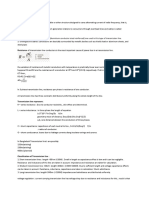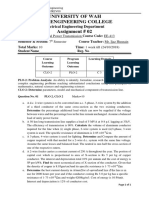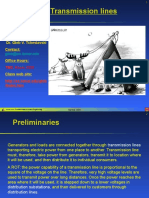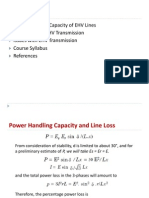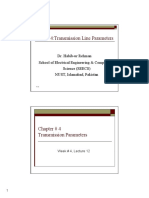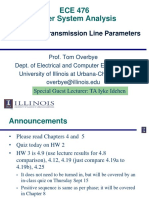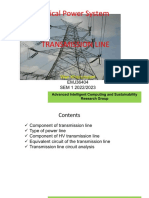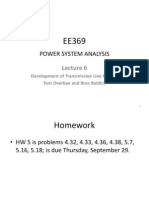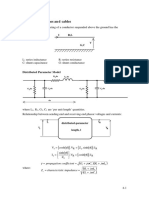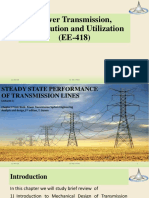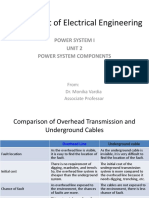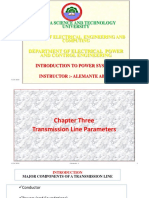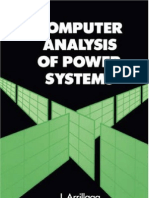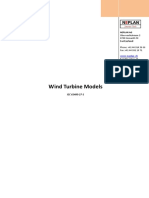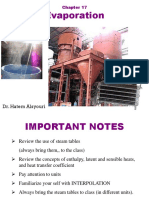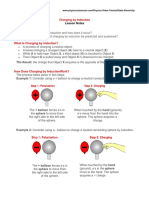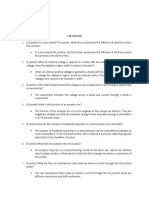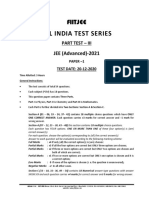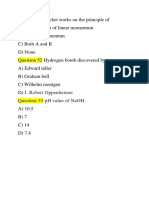0% found this document useful (0 votes)
61 views8 pagesEE303 - Energy Systems and Power Electronics: Lecture 18. Electric Power Transmission
This document summarizes a lecture on electric power transmission. The lecture objectives were to describe the structure of overhead transmission lines, identify the electrical parameters of transmission lines, present lumped-parameter equivalent circuits of transmission lines, and present fundamental concepts of power flow through transmission lines. Examples were provided to demonstrate calculating voltage and current values for transmission lines. Readings assigned were Module T1, pages 59-78 of the class notes.
Uploaded by
N R SHEKARCopyright
© © All Rights Reserved
We take content rights seriously. If you suspect this is your content, claim it here.
Available Formats
Download as PDF, TXT or read online on Scribd
0% found this document useful (0 votes)
61 views8 pagesEE303 - Energy Systems and Power Electronics: Lecture 18. Electric Power Transmission
This document summarizes a lecture on electric power transmission. The lecture objectives were to describe the structure of overhead transmission lines, identify the electrical parameters of transmission lines, present lumped-parameter equivalent circuits of transmission lines, and present fundamental concepts of power flow through transmission lines. Examples were provided to demonstrate calculating voltage and current values for transmission lines. Readings assigned were Module T1, pages 59-78 of the class notes.
Uploaded by
N R SHEKARCopyright
© © All Rights Reserved
We take content rights seriously. If you suspect this is your content, claim it here.
Available Formats
Download as PDF, TXT or read online on Scribd
/ 8


